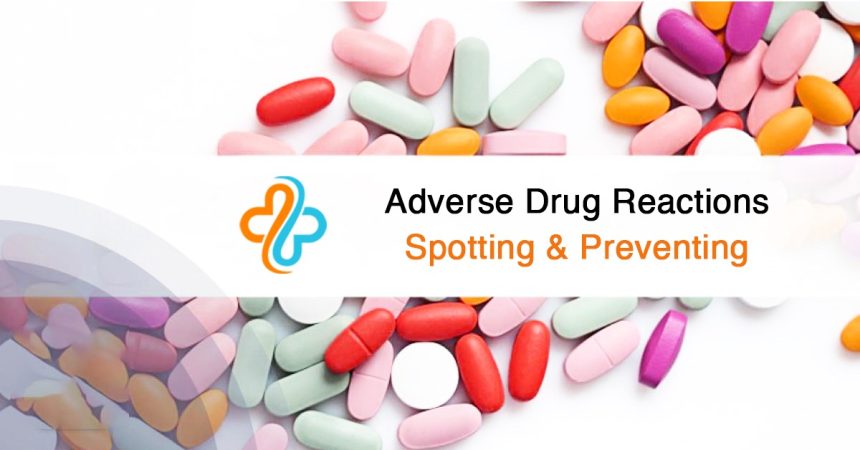Medications are crucial in healthcare and help save lives. However, they can sometimes cause unexpected problems called adverse drug reactions (ADRs). These reactions can range from minor inconveniences to serious, life-threatening health risks, and they can happen to anyone. This blog will explain what ADRs are, how to identify them, and what steps can be taken to prevent them.
What Are Adverse Drug Reactions?
ADRs stand for Adverse Drug Reactions, which are the effects a medicine has on a person. These effects are otherwise categorized as side effects.
Side effects involve adverse reactions that occur in a patient once they consume a particular drug at the recommended dosage. The results can be very trivial, for instance, a skin rash, or very severe, such as failure of the organ systems. According to a study by [Lazarou et al. (1998)] (https://pubmed.ncbi.nlm.nih.gov/9585615/), two million Americans suffer from ADRs, resulting in over 100 thousand deaths. These reactions also cost the U. S. healthcare system around $136 billion annually [(Johnson and Bootman, 1995)] (https://www.ncbi.nlm.nih.gov/books/NBK223444/).
Types of Adverse Drug
1. Type A reactions are expected actions due to the course of the particular drug. For instance, warfarin, an anticoagulant, can cause bleeding; other examples are listed above.
2. Type B reactions are many and unusual; they occur with the body’s immune system. An example is Stevens-Johnson syndrome, a severe skin reaction that is potentially life-threatening and is characterized by redness, blisters, and sometimes sloughing off of skin.
3. Type C reactions occur after a prolonged period of drug use whereby body tissue is damaged, such as the liver, may be damaged by a particular drug.
4. Type D reactions involve when a drug is taken with another drug, food, or herb, as seen in severe hypertension that may arise with the use of MAOI with certain foods.
How to Identify and Report Adverse Drug Reactions?
Identifying the ADRs is tricky because they are somehow hidden. Here are some standard methods:
Spontaneous Reporting: Doctors and patients can report suspected ADRs to agencies like the FDA. This helps track the safety of medications but can miss some cases due to underreporting.
Clinical Trials: These trials mean potential ADRs are identified before the drug is approved, but the trials are usually conducted on a small, select population.
Post-Marketing Surveillance: If a drug produced causes side effects after people start using it, then the effects are closely watched to identify hidden side effects.
Using Technology to Detect ADRs
Social media platforms, online forums, and websites make identifying ADRs easier. Tools like machine learning and social media analysis help spot patterns and report problems faster:
Machine Learning: This involves using computer algorithms to detect patterns in data. A study by [Liu et al. (2020)] (https://pubmed.ncbi.nlm.nih.gov/32126085/) showed that machine learning can predict ADRs better than traditional methods.
Social Media Analysis: Platforms like Twitter and Facebook can be useful for spotting ADRs. People often post about their experiences with medications, providing real-world data. A review by [Freifeld et al. (2014)] (https://pubmed.ncbi.nlm.nih.gov/24455169/) highlighted the potential of social media to detect ADRs.
Preventing Adverse Drug Reactions
While we can’t eliminate ADRs, we can take steps to reduce their impact:
Precision Medicine: This involves tailoring treatments based on individual genetic profiles to reduce the risk of ADRs.
Medication Reconciliation: This is because the various items that could be considered while prescribing medicines can be considered during the review of a person’s medication and can prevent harmful interactions.
Patient Education: A very effective measure of patient safety is to inform patients about the possible adverse effects of the prescribed medicines, and then the patient could report new problems.
Better Reporting Systems: Enhancing the ways we reference and follow ADRs can enable the early detection of such challenges and prevent them from occurring in the first place.
In Conclusion, Adverse drug reactions are a big challenge in healthcare, but we can manage them better with the right strategies. We can make medications safer by using new technologies, personalizing treatments, and improving reporting. Understanding and preventing ADRs helps protect patients and ensures better health outcomes. Through ongoing research, innovative tools, and patient-focused approaches, we can continue to improve drug safety and make healthcare more effective for everyone.


Leave a Reply